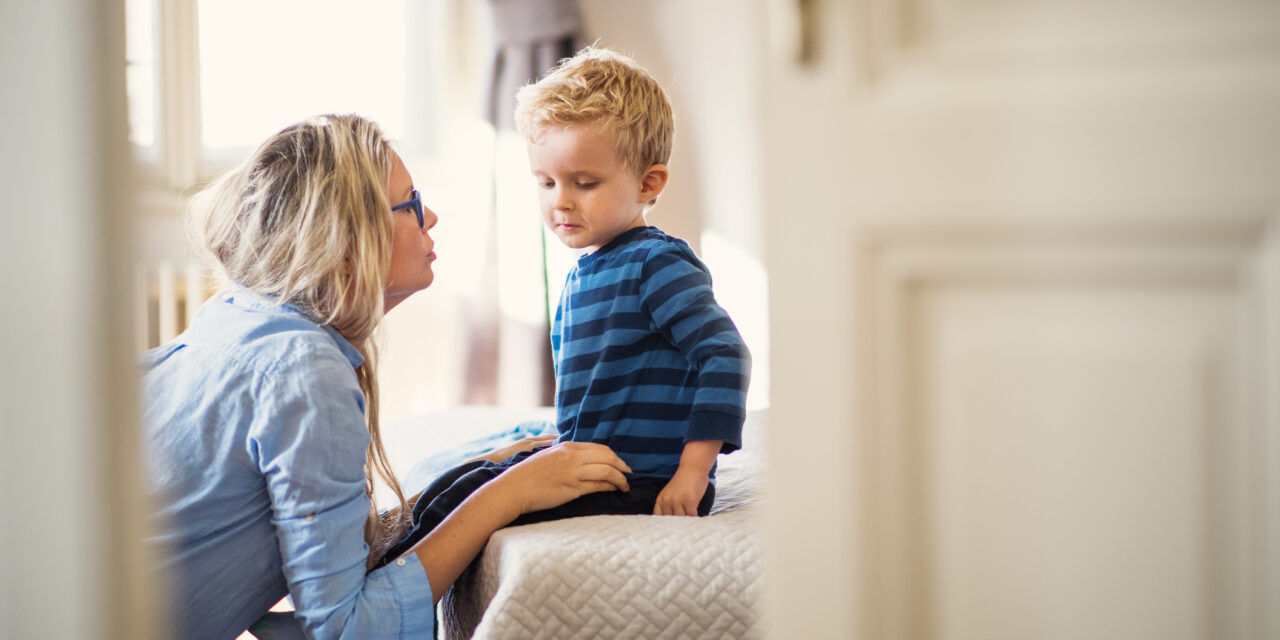My son will not go into a room alone. It doesn’t matter if it’s his own room, the kitchen, or even the hallway; he says he’s scared of going in there alone, even if it’s just to grab a toy or a drink. What can I do to help ease him into being comfortable with being alone?
From an evolutionary point of view, this makes sense. In order to ensure survival, children are wired to remain close to their attachment figures. So, depending on your child’s age, this may be developmentally appropriate. I often get curious about what else is going on in a child’s life when worries or anxieties surface. Has your child experienced any recent losses, changes, or stressors that might give context to these worries? Was there a particular incident that precipitated this specific worry?
Talk to your child about what it is that is worrying them about being alone, and really try to empathize with them by seeing the world through their eyes. When it comes to fears and worries, it often isn’t helpful to attempt to reason with our child logically; this can shut down conversation and prevent us from really understanding our child’s experience.
If you feel as though their worries are not developmentally appropriate, are worsening, or are impacting their daily functioning, it is usually worth talking to their pediatrician or the family physician to see what support might be available.
Regarding what you can be doing at home right now, it might be helpful to support your child to internalize the message that, even when we are apart, we remain connected to those we love by an invisible string.
There are two books that I recommend for this:
The Invisible String by Patricia Karst
And
Love by Corinne Averiss
If it feels appropriate to do so, I would also consider talking with your child and coming up with a laddered approach to addressing their worry. Let’s imagine that being upstairs alone in their room is their worst nightmare (a 10/10), and being downstairs in the same room as you is a 0/10; what would be on the other rungs of the ladder that you can very slowly work towards? Would playing in their room while you sit outside the door feel like a 3/10? Maybe the next step might be you sit outside your bedroom door while they play in their room; then you sit inside your room. Experiment together and try to work towards an agreed goal that feels achievable gradually. Celebrate success along the way and take things at a pace that feels right for your child.

















